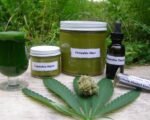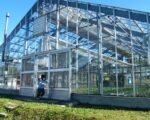Cannabis cultivation has seen a significant rise in popularity, and as more regions legalize its use, growers are exploring various climates to optimize their yields. Coastal climates, with their unique blend of temperature, humidity, and soil conditions, present both challenges and opportunities for cannabis growers. This comprehensive guide explores the intricacies of growing cannabis seeds in coastal climates, providing essential tips and tricks to ensure a successful harvest.
Coastal climates are characterized by their proximity to large bodies of water, which moderate temperature fluctuations and create a unique growing environment. These areas often have higher humidity levels, milder temperatures, and distinct soil compositions compared to inland regions. Understanding these characteristics is crucial for successful cannabis cultivation in coastal areas.

One of the most significant challenges of growing cannabis in coastal climates is the high humidity levels. Excessive humidity can create an ideal environment for mold and mildew, which can devastate cannabis plants. Preventing mold involves careful monitoring of humidity levels, ensuring proper air circulation, and selecting mold-resistant strains. Coastal soils can also have higher salinity levels due to their proximity to the ocean. High salt levels in the soil can hinder plant growth and nutrient uptake. It’s essential to test soil salinity and implement soil amendments, such as gypsum, to reduce salt concentrations and promote healthy plant development.
Wind exposure is another challenge in coastal areas. Strong winds can physically damage cannabis plants and reduce yields. Implementing windbreaks, such as hedges or fences, and using stakes or trellises to support plants can mitigate wind damage and promote robust growth. Despite these challenges, coastal climates offer several benefits for cannabis cultivation. The moderating effect of large bodies of water means that coastal climates often experience milder temperatures compared to inland areas. This can create a more stable growing environment with fewer extreme temperature fluctuations, which can be beneficial for cannabis plants.
Selecting the Right Strains
Choosing the right cannabis strains is crucial for successful cultivation in coastal climates. Genetics play a significant role in determining how well a plant will perform in specific environmental conditions. For coastal climates, it’s essential to select strains that are resistant to mold and mildew, can tolerate higher humidity levels, and thrive in milder temperatures.
Some strains are specifically bred for outdoor cultivation and can handle the unique challenges of coastal environments. For example, strains like Amnesia Haze and Shining Silver Haze are known for their resilience in warm, wet climates. These strains have been developed to withstand the higher humidity and potential mold issues that can arise in coastal areas. Additionally, selecting autoflowering strains can be beneficial in coastal climates. Autoflowering strains have a shorter growth cycle and can be less susceptible to mold and mildew due to their quicker maturation. This can be particularly advantageous in regions with extended growing seasons, allowing for multiple harvests throughout the year.
It’s also important to consider the local climate and growing conditions when selecting strains. Researching and understanding the specific environmental factors of your coastal region can help you choose the best strains for your garden. Consulting with local growers and seed banks can provide valuable insights and recommendations for strains that perform well in your area.
Best Practices for Coastal Cultivation
Successful cannabis cultivation in coastal climates requires careful planning and attention to detail. Implementing best practices can help mitigate the challenges and maximize the benefits of growing in these unique environments. One of the most important aspects of coastal cultivation is managing humidity levels. Using dehumidifiers and fans to control humidity and ensure proper air circulation can help prevent mold and mildew. Regularly inspecting plants for signs of mold and taking immediate action if any issues are detected is crucial for maintaining healthy crops.
Soil management is another key factor in coastal cultivation. Testing soil salinity and making necessary amendments can improve soil quality and promote healthy plant growth. Using raised beds or containers with well-draining soil can also help manage soil salinity and prevent waterlogging. Protecting plants from wind damage is essential in coastal areas. Implementing windbreaks, such as hedges or fences, can shield plants from strong winds. Using stakes or trellises to support plants can also help prevent damage and promote robust growth.
Finally, regular monitoring and maintenance are critical for successful coastal cultivation. Keeping a close eye on environmental conditions, plant health, and potential issues can help you address problems early and ensure a successful harvest. By following these best practices, you can optimize your cannabis cultivation in coastal climates and enjoy a bountiful harvest.
Emily Wilson is a talented wordsmith whose passion for cannabis shines through in her eloquent articles that explore the plant’s cultural significance and historical context. With a focus on arts and lifestyle, she weaves together narratives that celebrate the creativity, innovation, and community fostered by cannabis enthusiasts worldwide. Emily’s unique perspective and engaging storytelling invite readers to embark on a journey of discovery and appreciation for the diverse facets of the cannabis experience.








